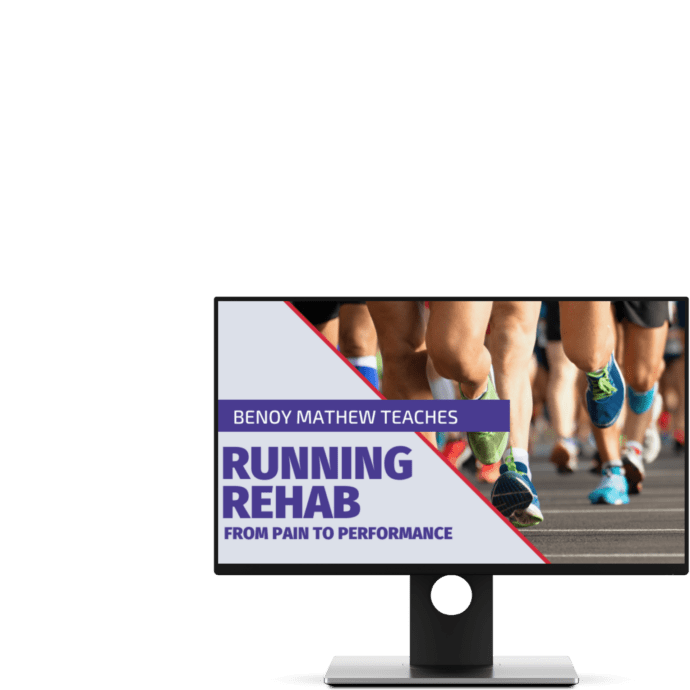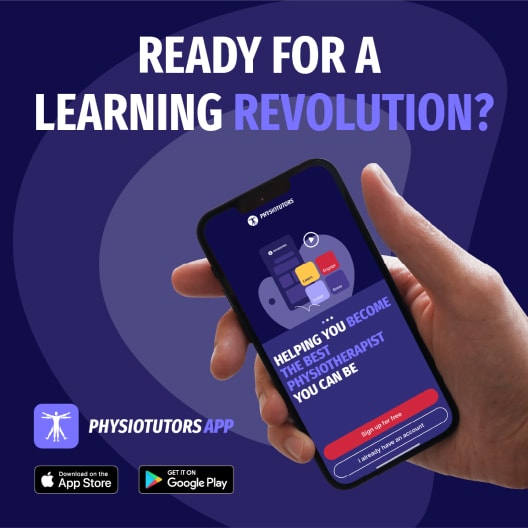Piriformis Syndrome / Deep Gluteal Syndrome (DGS) | Diagnosis & Treatment

Piriformis Syndrome / Deep Gluteal Syndrome (DGS) | Diagnosis & Treatment
Introduction
Deep gluteal syndrome, abbreviated as DGS is defined as pain in the buttock area caused by a non-discogenic entrapment of the sciatic nerve in the subgluteal space.
The piriformis muscle runs from the sacrum to the hip joint. Due to the fact that the sciatic nerve runs underneath it, it was suggested that a tight piriformis might compress the sciatic nerve and cause pain in the buttock and the back of the leg. Researchers have even found anatomic variations where the sciatic nerve runs directly through the muscle, leaving the sciatic nerve even more susceptible in theory. On the other hand a study by Bartret et al. (2018) examined 1039 adult hips on MRI of which around 20% had sciatic nerve variants that might make the sciatic nerve more susceptible to compression by the piriformis muscle. They found no relationship between sciatic nerve variants and piriformis syndrome.

There are more anatomic structures that could potentially compress the sciatic nerve like the gemelli-obturator internus complex, the hamstring muscles, fibrous bands containing blood vessels, vascular abnormalities and space-occupying lesions. For this reason, experts now prefer the term “deep gluteal syndrome”.
Epidemiology
The prevalence of piriformis syndrome is not well-established, and estimates vary. Piriformis syndrome is considered a relatively rare condition compared to other causes of sciatic nerve compression or irritation
In patients who do actually suffer from real sciatica, only 6-8% are thought to have piriformis syndrome (Stafford et al. 2007). This means that in the vast majority of cases, there will be different underlying reasons for sciatica, mainly nerve root compression due to lumbar disk herniations or foraminal stenosis.
We have written a whole blog article about it covering this discussion if you would like to learn more.
LEVEL UP YOUR DIFFERENTIAL DIAGNOSIS IN RUNNING RELATED HIP PAIN – FOR FREE!

Follow a course
- Learn from wherever, whenever, and at your own pace
- Interactive online courses from an award-winning team
- CEU/CPD accreditation in the Netherlands, Belgium, US & UK
Clinical Picture
Commonly reported symptoms of deep gluteal syndrome include hip or buttock pain and tenderness in the gluteal and retro-trochanteric region. The pain is often described to be sciatica-like, often unilateral, and exacerbated with rotation of the hip in flexion and knee extension. Other symptoms include intolerance of sitting more than 20 to 30 minutes, limping, disturbed or loss of sensation in the affected extremity, and pain at night getting better during the day.
Physical Examination
Several orthopedic tests are described to assess for DGS, but most of them have not undergone diagnostic accuracy studies. For this reason, their use is questionable. This is also the reason why DGS remains a diagnosis of exclusion. So before you conduct any of the following tests, make sure you have examined and excluded more prevalent pathologies in the lumbar spine and SI joint that could explain the patient’s symptoms.
The only study evaluating the diagnostic accuracy of different tests for DGS is a study by Martin et al. (2014).
the seated piriformis stretch test had a sensitivity of 52% and a specificity of 90% in the diagnosis of endoscopically confirmed sciatic nerve entrapment. This is the only study evaluating this test yet, which is why we give this test a moderate clinical value to confirm the condition in practice. According to this study, the active piriformis test had a sensitivity of 78% and a specificity of 80% in the diagnosis of endoscopically confirmed sciatic nerve entrapment. This is the only study evaluating this test yet, which is why we give this test a moderate clinical value to in and exclude the condition in practice.
The Seated Piriformis Stretch Test is another test that was evaluated by Martin et al. (2014), the seated piriformis stretch test had a sensitivity of 52% and a specificity of 90% in the diagnosis of endoscopically confirmed sciatic nerve entrapment. This is the only study evaluating this test yet, which is why we give this test a moderate clinical value to confirm the condition in practice.
Other orthopedic tests for deep gluteal syndrome are:
Follow a course
- Learn from wherever, whenever, and at your own pace
- Interactive online courses from an award-winning team
- CEU/CPD accreditation in the Netherlands, Belgium, US & UK
Treatment
There is quite a variety of options targeted at short-term pain relief like manual pressure and massage in the painful area, dry needling, heat, and rolling with a foam roller or tennis ball. Another short-term option is to stretch the deep gluteal muscles. Here are 2 stretches that you might want to try at home:
- Yoga pose
- Standard piriformis stretch in sitting or supine

While those are all “optional”, our recommendation for short-term pain relief is to decrease activities that are aggravating your buttock pain. Avoid prolonged sitting or standing and try to change positions as often as possible as our muscles don’t like static postures. Sitting on a well-cushioned pillow can make sitting a bit more bearable and having a pillow between your legs when you’re lying in bed can reduce prolonged stretch on the gluteal muscles. If running or walking is painful, temporarily decrease your running or walking volume to tolerable levels.
As mentioned in other videos, the only real long-term solution to muscle pain is a progressive exercise program that targets the painful area. With all exercises, make sure that pain levels are tolerable during the program. If pain increases afterward, make sure the pain settles within 24 hours. If this is not the case, try easier exercises or decrease the number of sets and reps. Here’s an example of a progressive exercise program starting from easy to more advanced exercises:

- Clam Shells 🡪 Add resistance bands 🡪 side plank clamshell
- Fire hydrants in sitting 🡪 quadruped🡪 standing with resistance band
- Glute bridges 🡪 1 legged
- Horse kicks
If these exercises are tolerable, you can move on to heavier more global exercises such as:

- Side lying abduction with the ball against the wall
- Leg Presses
- Squats
- Hip thrusts
Would you like to learn more about Piriformis Syndrome / Deep Gluteal Syndrome or other pathologies mimicking it? Then check out the following resources:
- Pain in the Butt – Why it’s not Piriformis Syndrome
- Referred Pain, Nociceptive Pain, Or A Radiculopathy?
- Podcast Episode 036 – Hip Pathologies with Mehmet Gem
References
Follow a course
- Learn from wherever, whenever, and at your own pace
- Interactive online courses from an award-winning team
- CEU/CPD accreditation in the Netherlands, Belgium, US & UK
Running Rehab: From Pain to Performance


What customers have to say about this online course
- gustaf hübinette05/02/25A fantastic course A fantastic and comprehensive course that I feel has both broadened and deepened my knowledge of running-related injuries and their rehabilitation. The content maintains a clear and cohesive structure, firmly grounded in research. A big plus is that even after completing the course, you can revisit the material whenever you need to review certain areas.Simon20/01/25Good, but too much! It's of course a luxury problem. It delivers, absolutely. I know a lot more about running injuries now. But you need to review how much time it takes to finish this monster.
- Salih Kuzal30/12/24Running Rehab Salih Kuzal Een hele leuke uitgebreide cursus wat goed toepasbaar is in de dagelijkse praktijk. Heb er veel van geleerd!Sander Wierstra27/12/24Leerzame cursus Deze cursus heeft me inzicht gegeven om topatleten en sporters beter te begeleiden richting een duurzame herstel, ik raad deze cursus zeker aan!
- Jaime van der Lugt27/12/24Running Rehab 2.0 Well organised and clear set-up course to dive deeper into Running Rehab. Very extensive. Would definitely recommend it!Jasper Campfens24/12/24Top cursus Erg sterke cursus. Zeer uitgebreid wordt er ingegaan op alle meest voorkomende hardloopblessures. Van diagnose tot RTR.
- Carmen21/12/24Running Rehab Very good en clear course!Thorin21/12/24Sterke aanrader! Zeer uitgebreide cursus over een grote populatie binnen de bevolking. Elke kinesitherapeut zal hier veel uit bijleren, of hij nu zelf aan lopen doet of niet! Gestructureerde cursus bestaande uit Evidence-Based teksten en video's. Duidelijke toepassing van de theorie terug te vinden in de video's.
- Ivo Rigter03/12/24Running Rehab: From Pain to Performance Bedankt voor de zeer uitgebreide en informatieve cursusEllen Oosting27/11/24Veel geleerd! Veel geleerd over blessures, behandeling, training en terugkeer naar sport. Afwisselende inhoud. Veel praktische tools. Punten ook snel bijgeschreven na afronding.
- Olivier19/11/24Goede cursus! Ik kan deze cursus alle fysiotherapeuten aanraden!Joas de Bijl07/11/24Fijne cursus Goede cursus waar wetenschap en klinische ervaring in terug komt. Leuke video’s die wat mij betreft goed aansluiten op de praktijk!
- Koen24/10/24Leerzame Cursus Een cursus die een absolute bijdrage levert voor therapeuten die veel patiënten zien met hardloopblessures.
Vooral de praktische tips en de opbouw na een blessure zijn erg bruikbaar en toepasbaar in een eerste lijn praktijk.
Tevens zijn de evidence based artikelen een mooie toevoeging op de kennis die al wordt gegeven.Tim14/10/24Great course Learned a lot about running injuries. So much more structure in assessing and treating all lower limb injuries. - Maria Kramer14/10/24Running Rehab: From Pain to Performance Goede cursus voor therapeuten die veel hardloopblessures behandelen en hier meer over willen weten. Veel evidence based informatie en praktische tips voor de opbouw na een blessure.Emin Yildiz26/08/24Running Rehab: From Pain to Performance Leerzaam, uitleg en inhoud van top kwaliteit!
- Daniel Deyhle02/02/24Running Rehab: From Pain to Performance A VERY DETAILED COURSE
Really nice! Lot´s of high quality content! I learned so much. Thank you!Jarne Standaert18/04/23Running Rehab: From Pain to Performance Dit is een uitstekende cursus voor therapeuten die patiënten met loopblessures gerichter en efficiënter willen behandelen. Je krijgt enerzijds een uitgebreid overzicht van welke loopgerelateerde blessures zich vaak voordoen. Anderzijds krijg je een goed onderzoekskader om de tekorten bij je patiënten op te sporen en dus ook gerichter te behandelen. De cursus is heel duidelijk. Je krijgt ook een goed beeld van welke oefentherapie je best toepast in een bepaald stadium van een bepaalde pathologie - Hannah Yelin09/04/23Running Rehab: From Pain to Performance A great course that gives you a comprehensive and detailed knowledge of various running complaints. The content is evidence based and the literature is attached. It is very well taught how to transfer the evidence into everyday practice. I highly recommend this course to all physios who work with runners.
Thank you for a great course!Ruba Al Barghouthi23/10/22Running Rehab: From Pain to Performance Very informative course. Highly recommended for every MSK Physiotherapist and any other health care providers who deal with runners.







